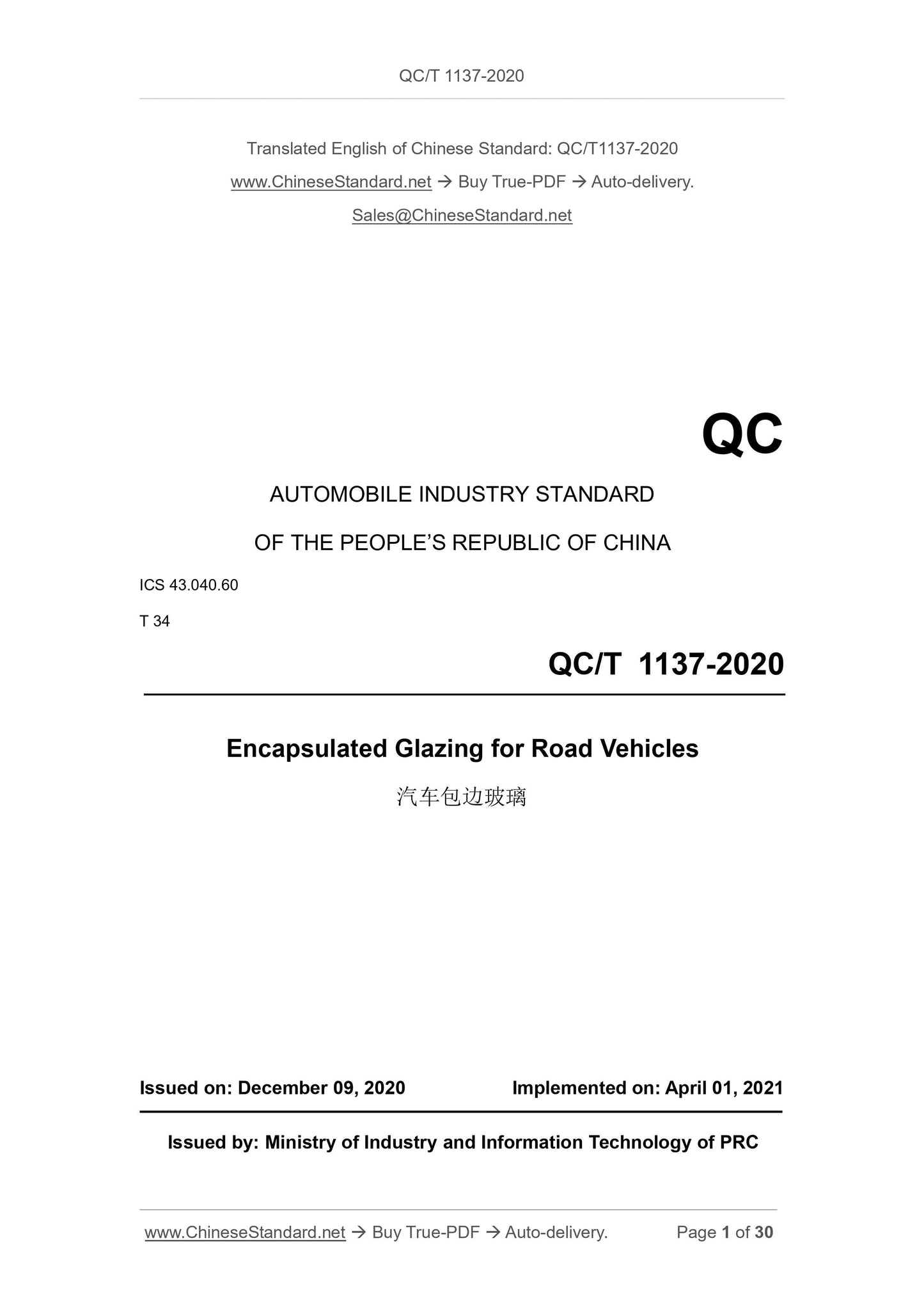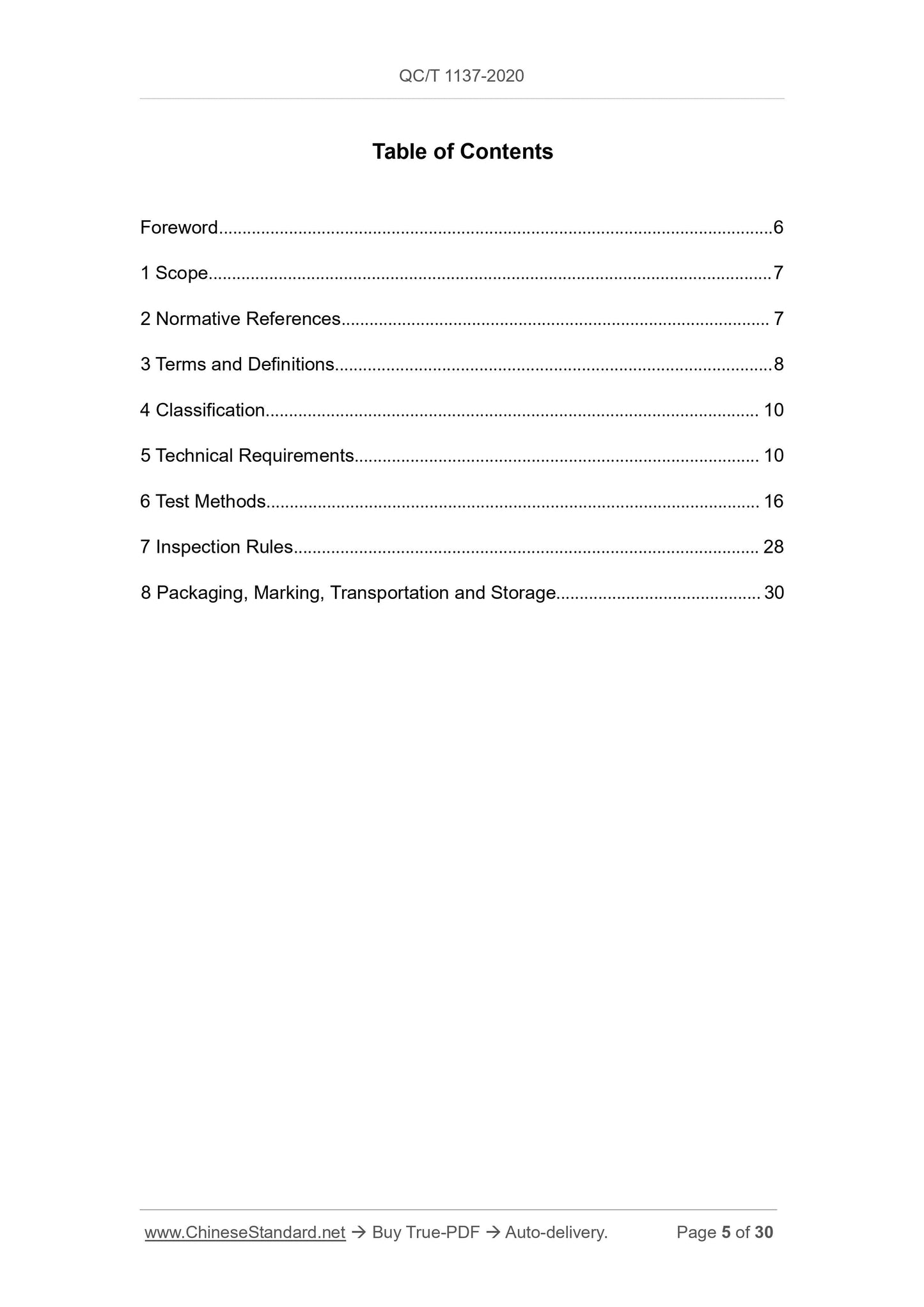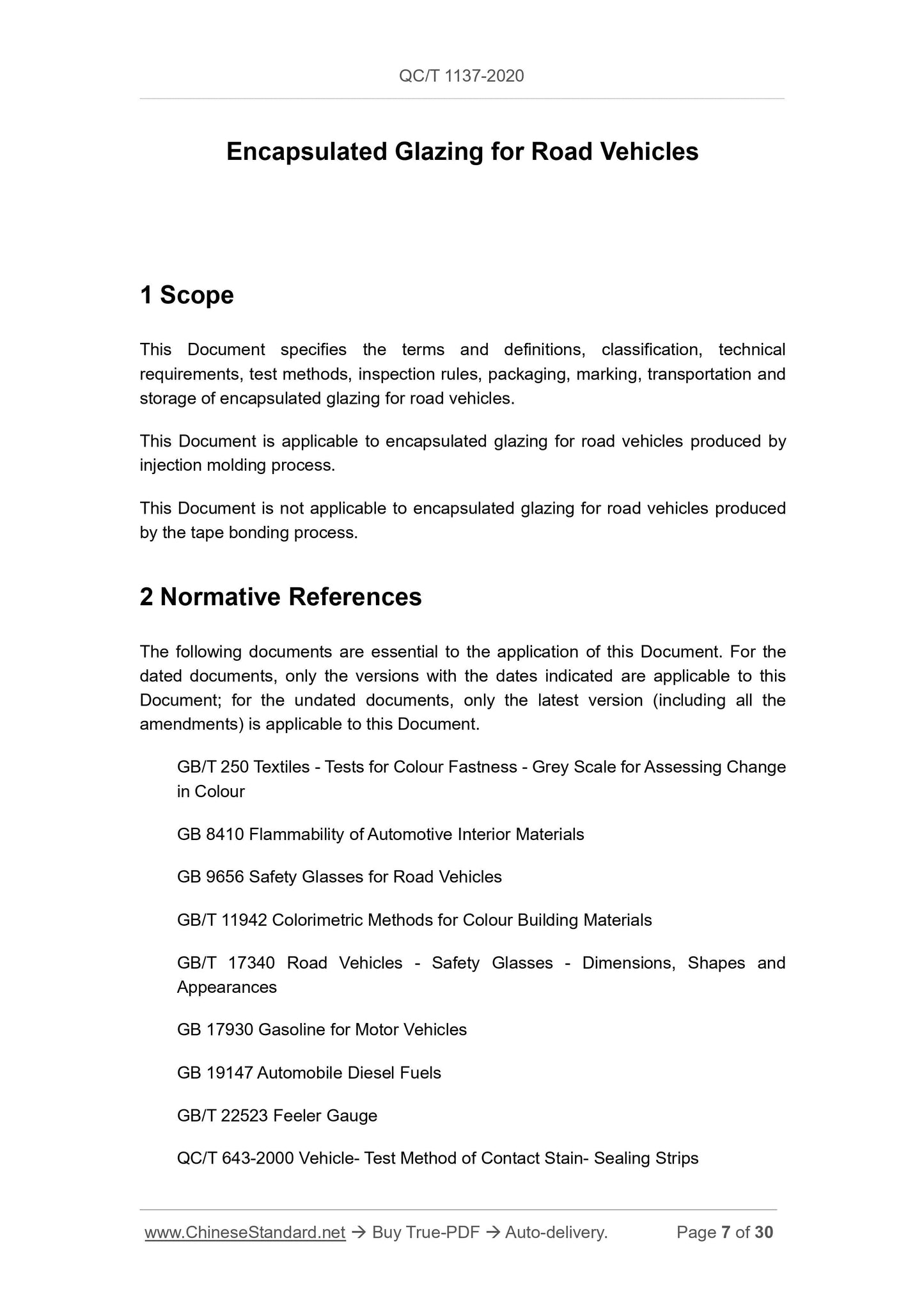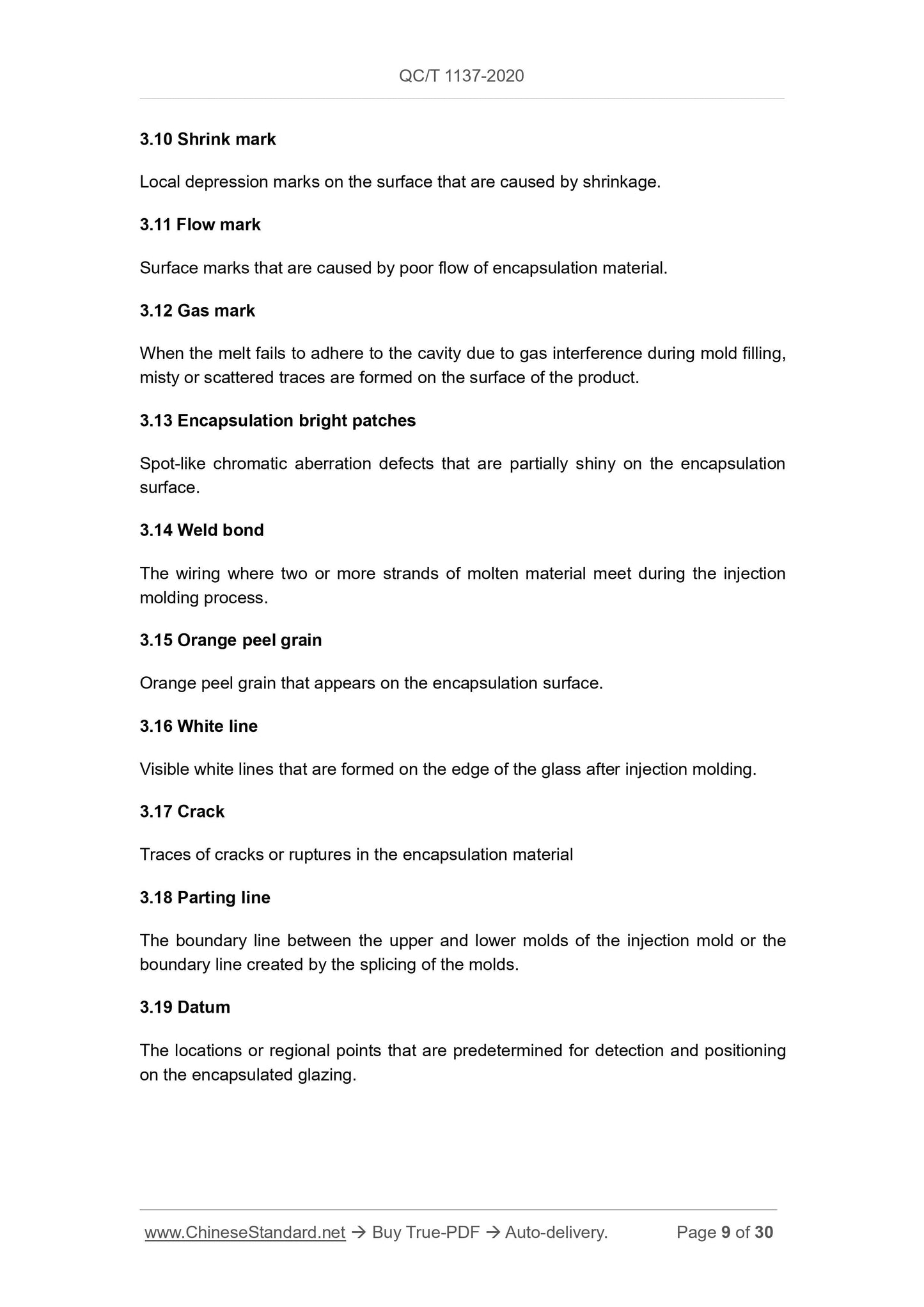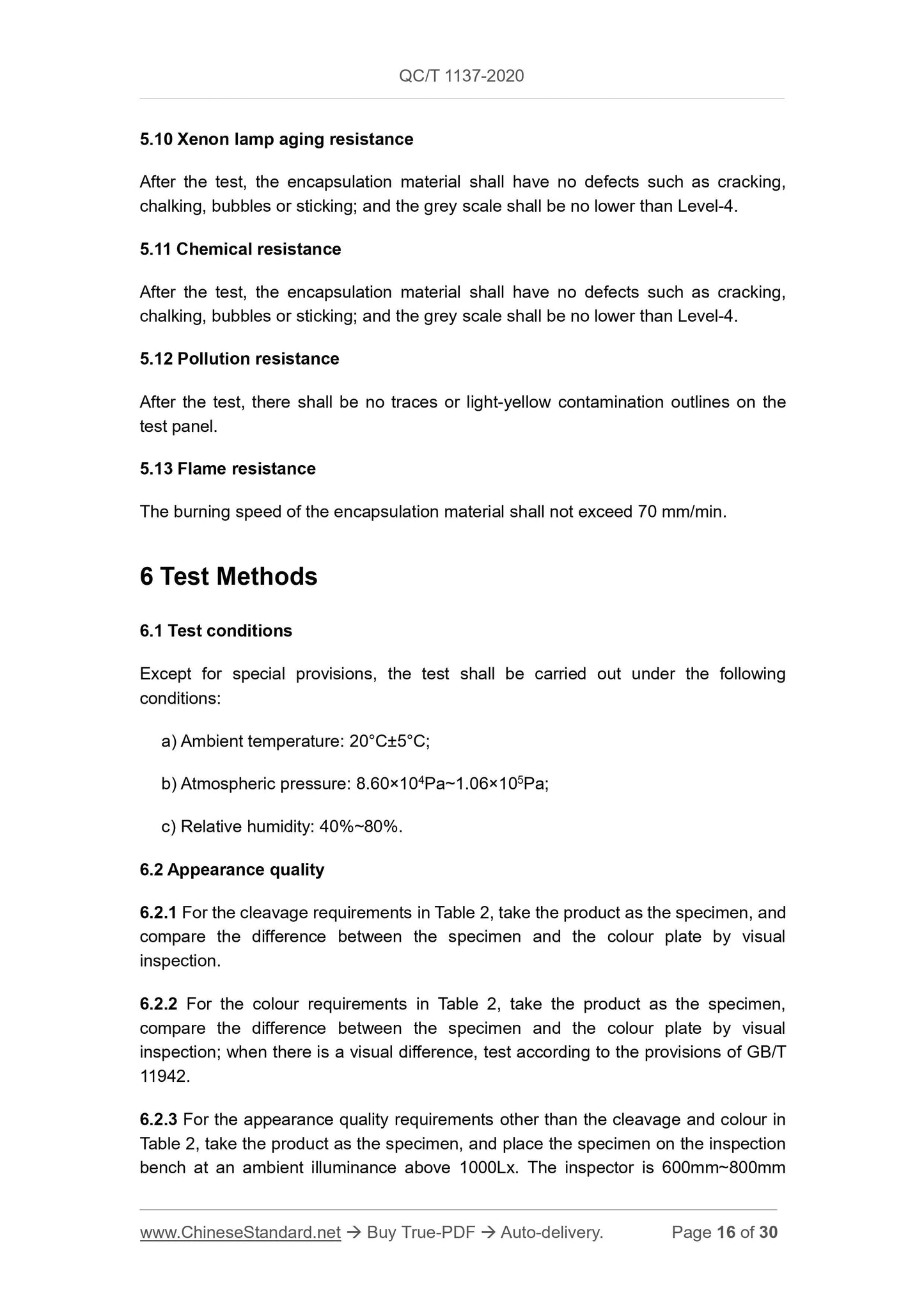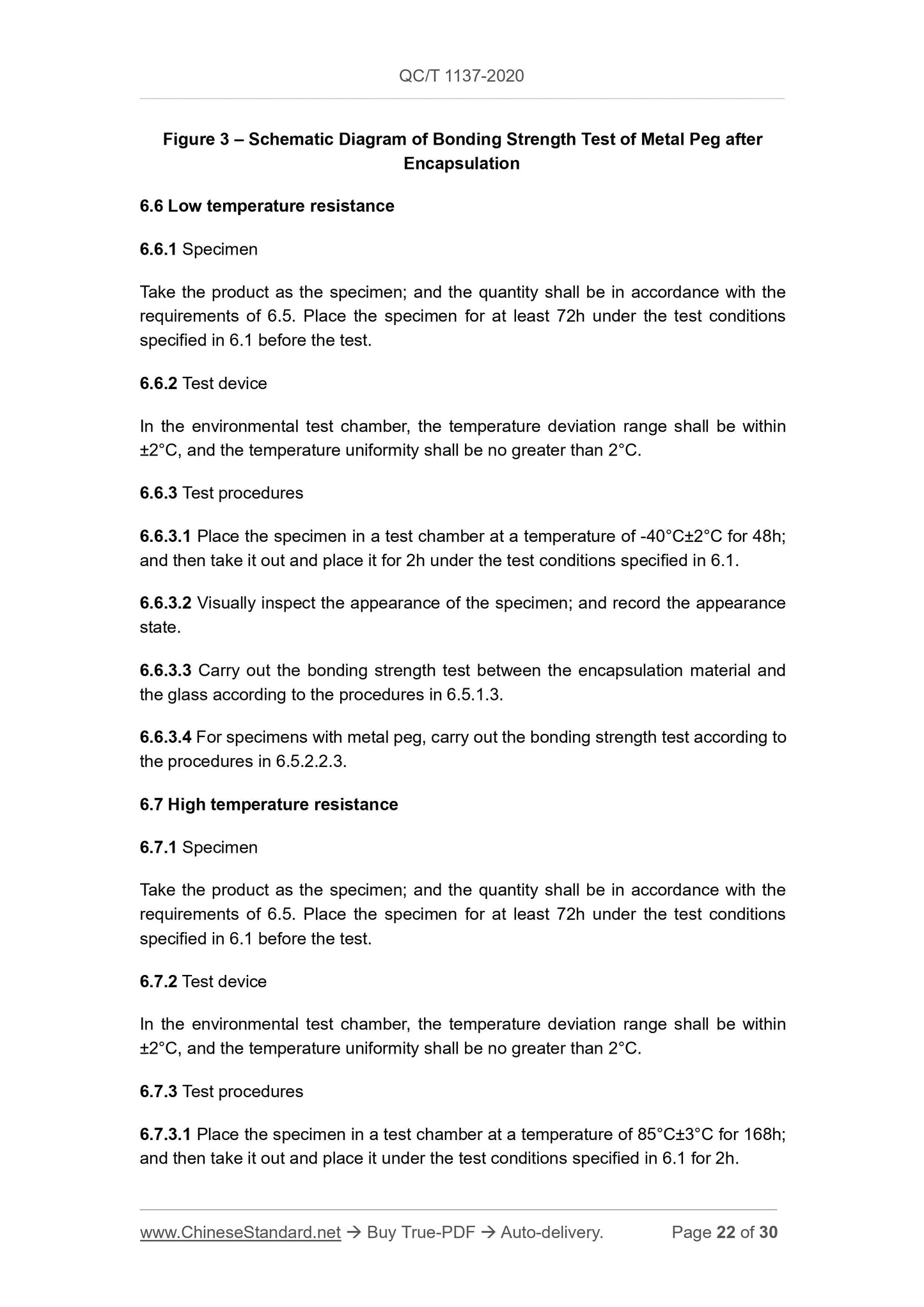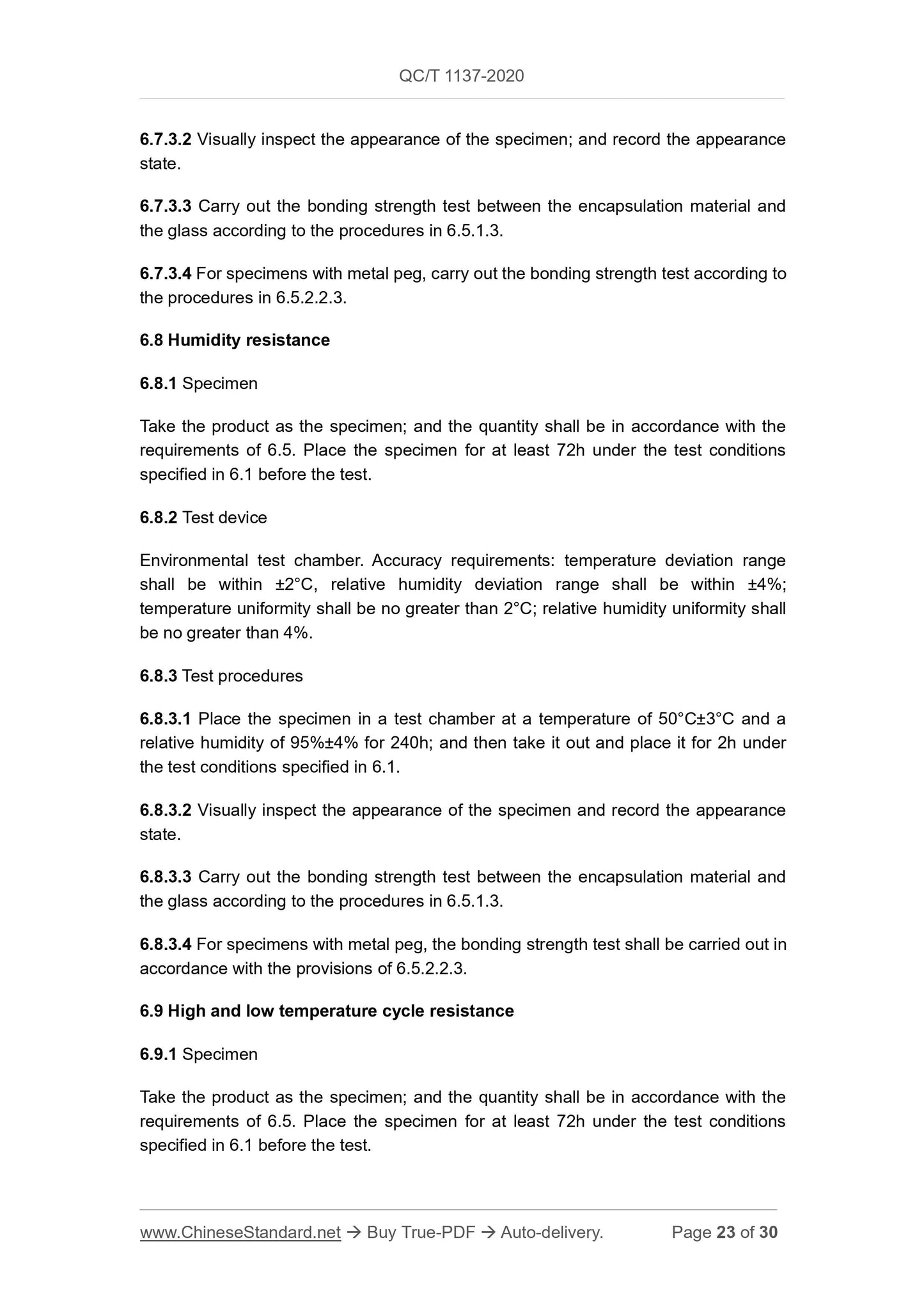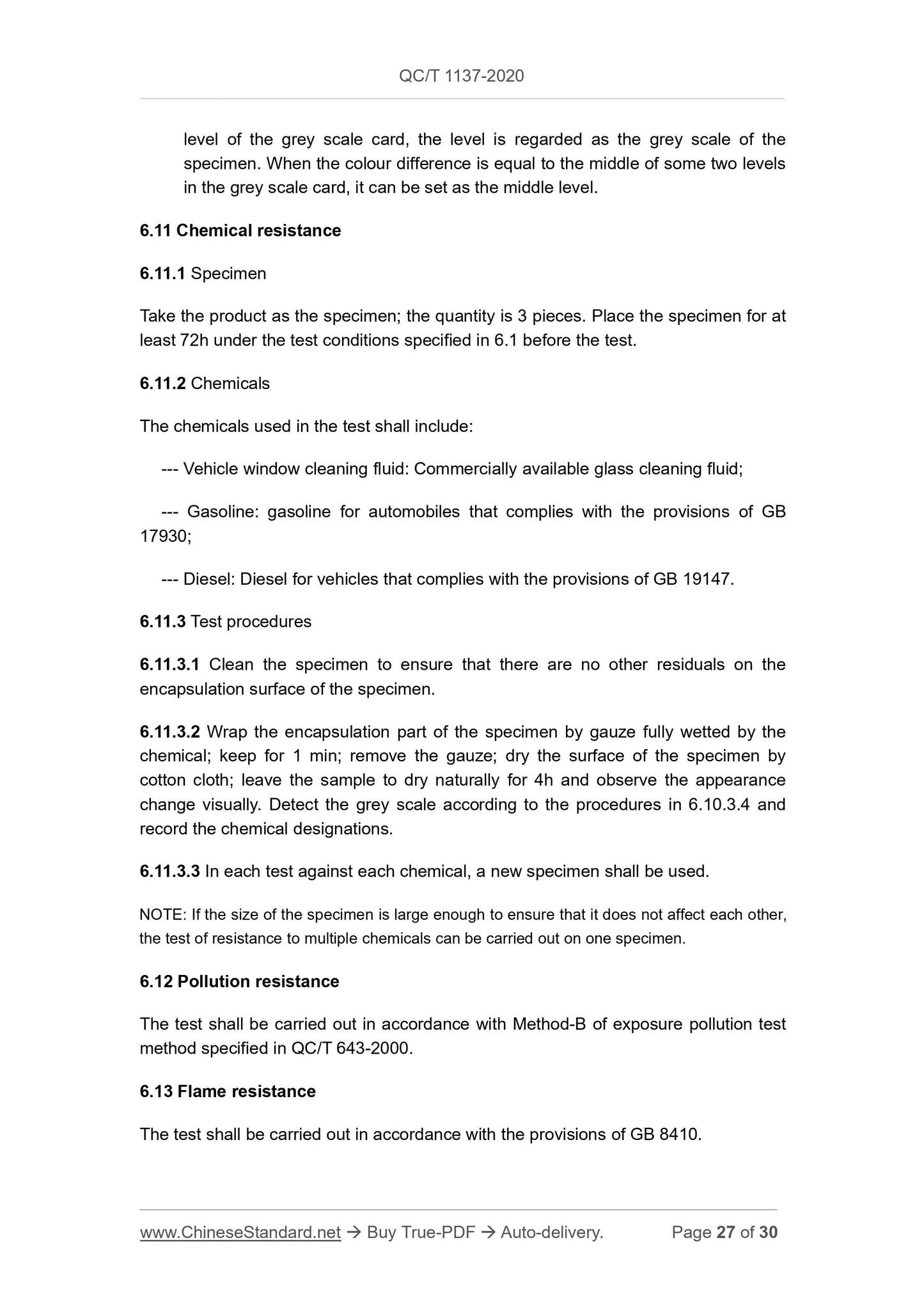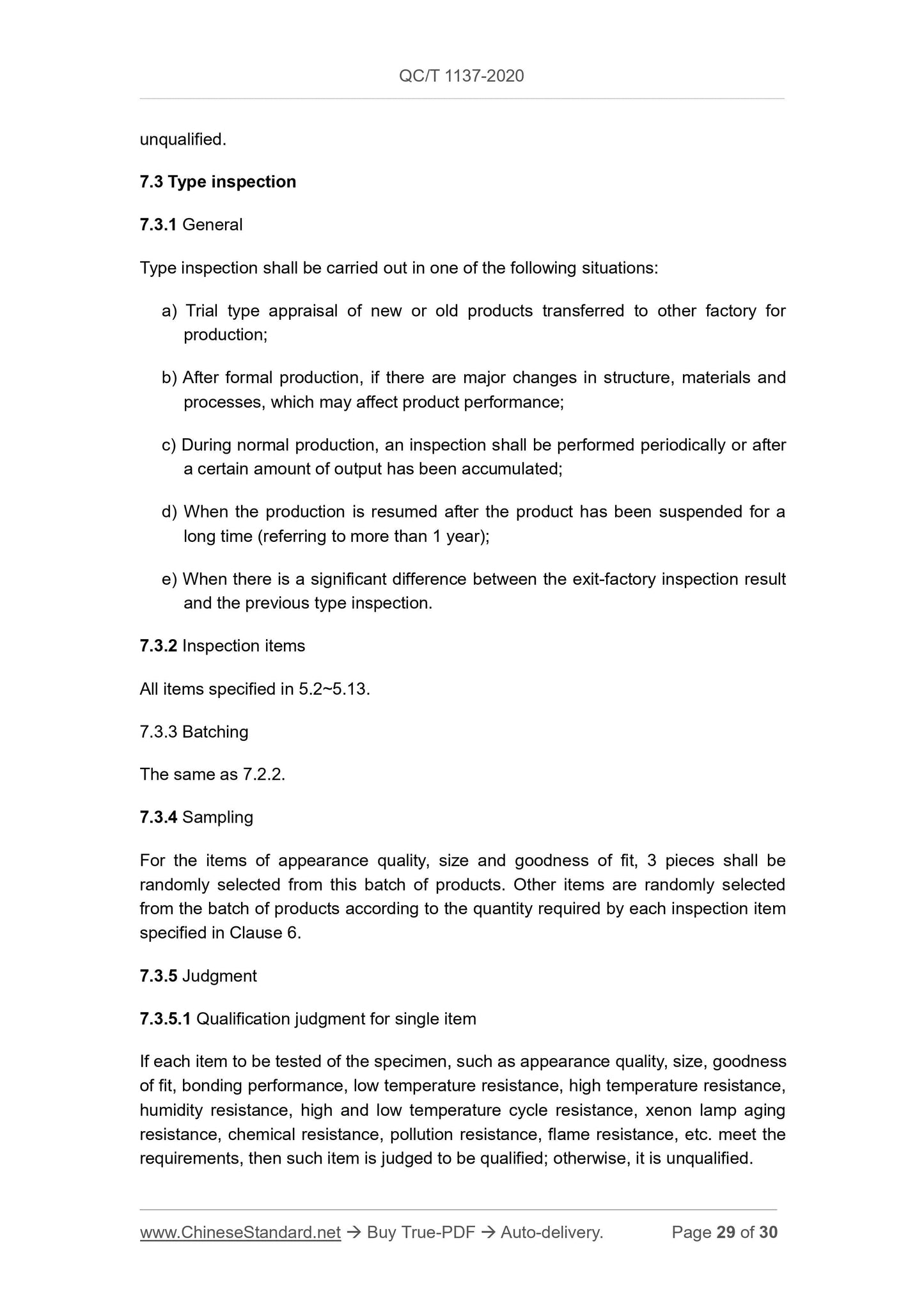1
/
of
9
www.ChineseStandard.us -- Field Test Asia Pte. Ltd.
QC/T 1137-2020 English PDF (QC/T1137-2020)
QC/T 1137-2020 English PDF (QC/T1137-2020)
Regular price
$290.00
Regular price
Sale price
$290.00
Unit price
/
per
Shipping calculated at checkout.
Couldn't load pickup availability
QC/T 1137-2020: Encapsulated Glazing for Road Vehicles
Delivery: 9 seconds. Download (and Email) true-PDF + Invoice.Get Quotation: Click QC/T 1137-2020 (Self-service in 1-minute)
Newer / historical versions: QC/T 1137-2020
Preview True-PDF
Scope
This Document specifies the terms and definitions, classification, technicalrequirements, test methods, inspection rules, packaging, marking, transportation and
storage of encapsulated glazing for road vehicles.
This Document is applicable to encapsulated glazing for road vehicles produced by
injection molding process.
This Document is not applicable to encapsulated glazing for road vehicles produced
by the tape bonding process.
Basic Data
| Standard ID | QC/T 1137-2020 (QC/T1137-2020) |
| Description (Translated English) | Encapsulated Glazing for Road Vehicles |
| Sector / Industry | Automobile and Vehicle Industry Standard (Recommended) |
| Classification of Chinese Standard | T34 |
| Word Count Estimation | 20,270 |
| Date of Issue | 2020-12-09 |
| Date of Implementation | 2021-04-01 |
| Regulation (derived from) | Ministry of Industry and Information Technology Announcement No. 48 (2020) |
| Issuing agency(ies) | Ministry of Industry and Information Technology |
Share
